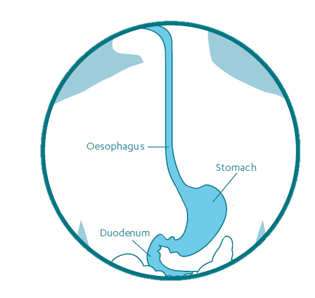 Oesophageal Dilation
Oesophageal Dilation
What is a oesophageal dilation?
Oesophageal dilatation is the procedure where the narrowing (stricture)
of your oesophagus is stretched to improve your swallowing.
You will be given some sedation before the doctor passes the endoscope
through your mouth and into the oesophagus. The endoscope is a long
flexible tube (thinner than your little finger) with a bright light at the end.
Through it, the doctor then places a guide wire across the narrowed area
in the oesophagus. Using the wire as a guide, the stricture is dilated with
a dilator or a balloon. X-ray equipment is sometimes used to help.
The dilation is often repeated using dilators or balloons to increase size until
the narrowed area has been stretched adequately.
|
During your procedure you will be given sedation. It is important that you arrange for someone to drive you home following your procedure. You are not permitted, by law, to drive yourself. For safety reasons, if you are travelling on public transport, or in a taxi, please arrange for a support person to travel with you.
|